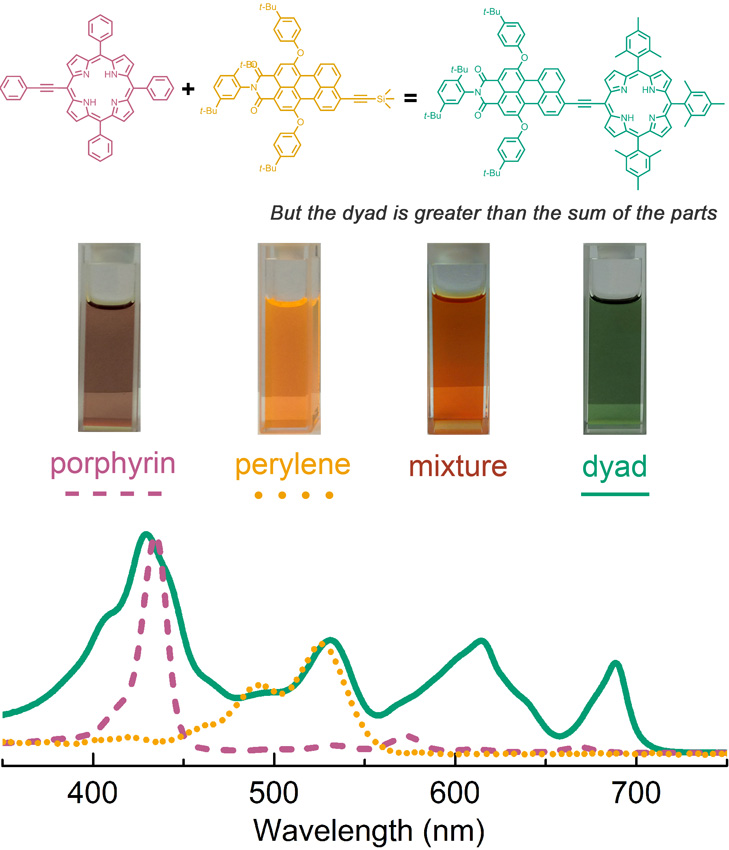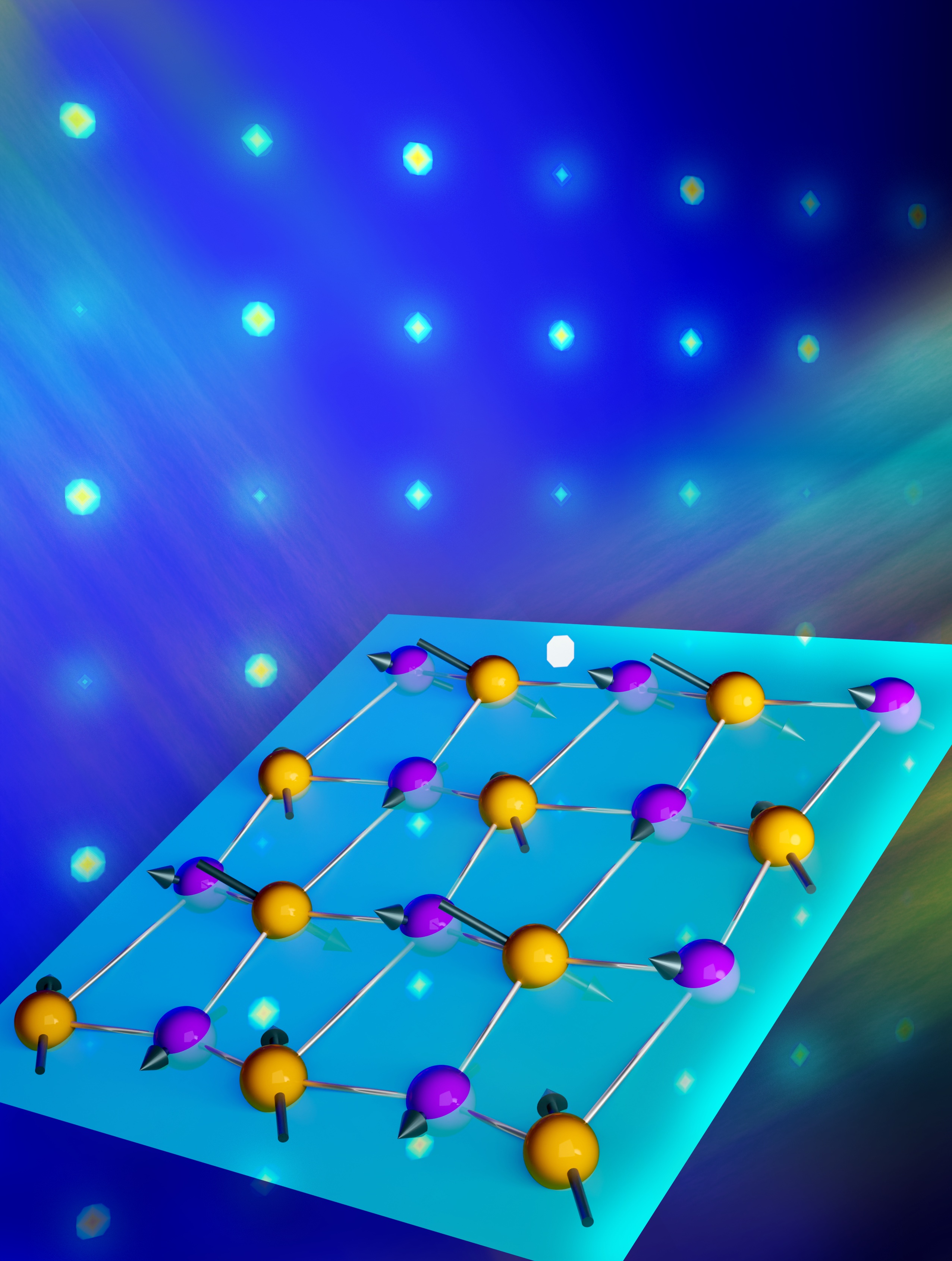Capturing All the Light: Panchromatic Visible Absorption for Solar Photoconversion
Linking together two light absorbing pigments to construct a better artificial photosynthesis solar cell.

The Science
Coupling two light absorbing pigments into a dyad motif results in the unexpected ability to tune electronic structure of the chromophores and allows intense absorption of light spanning near-ultraviolet to near-infrared.
The Impact
These new light-harvesting architectures in solar energy conversion offer the ability to construct compact molecular-based absorbers for solar cells that have intense absorption over a broad region of the solar spectrum while retaining long excited state lifetimes and high fluorescence yields.
Summary
A major challenge in artificial photosynthesis is development of systems that absorb sunlight and channel the resulting energy to a designated site. A traditional route to such architectures is to combine a large number of pigments with complementary and relatively narrow absorption bands to cover the spectrum. However, this research presents a new paradigm – a compact unit with an electronic structure that provides absorption over a broad range of light “colors”. Such units generally exhibit short excited-state lifetimes, compromising overall energy transfer efficiency. Researchers funded by BES created linked pairs, or dyads, of light absorbing pigments by attaching a common perylene to a tetrapyrrole chromophore from nature; these chromophores – a porphyrin, chlorin, and bacteriochlorin – are exemplified in nature by heme, chlorophyll, and bacteriochlorophyll. These linkages resulted in a strong electronic interaction, shifting the strongest absorption intensities to longer wavelengths and lengthening the excited state lifetime in conditions relevant for solar photoconversion devices. Collectively, the characteristics of these strongly coupled perylene−tetrapyrrole dyads show that these structures are excellent candidates for light-harvesting materials with significant, even panchromatic, or full spectrum, near-ultraviolet to near-infrared light absorption.
Contact
David Bocian: david.bocian@ucr.edu
Dewey Holten: holten@wustl.edu
Jonathan Lindsey: jlindsey@NCSU.edu
Funding
This work was supported by grants from the Division of Chemical Sciences, Geosciences, and Biosciences, Office of Basic Energy Sciences of the U.S. Department of Energy to D.F.B. (DE-FG02-05ER15660), D.H. (DE-FG02-05ER15661), and J.S.L. (DE-FG02-96ER14632).
Publications
Wang, J, et al., “Distinct Photophysical and Electronic Characteristics of Strongly Coupled Dyads Containing a Perylene Accessory Pigment and a Porphyrin, Chlorin, or Bacteriochlorin.” J. Phys. Chem. B 117, 9288-9304 (2013). [DOI: 10.1021/jp405004d]
Highlight Categories
Performer: University



